TREATMENTS
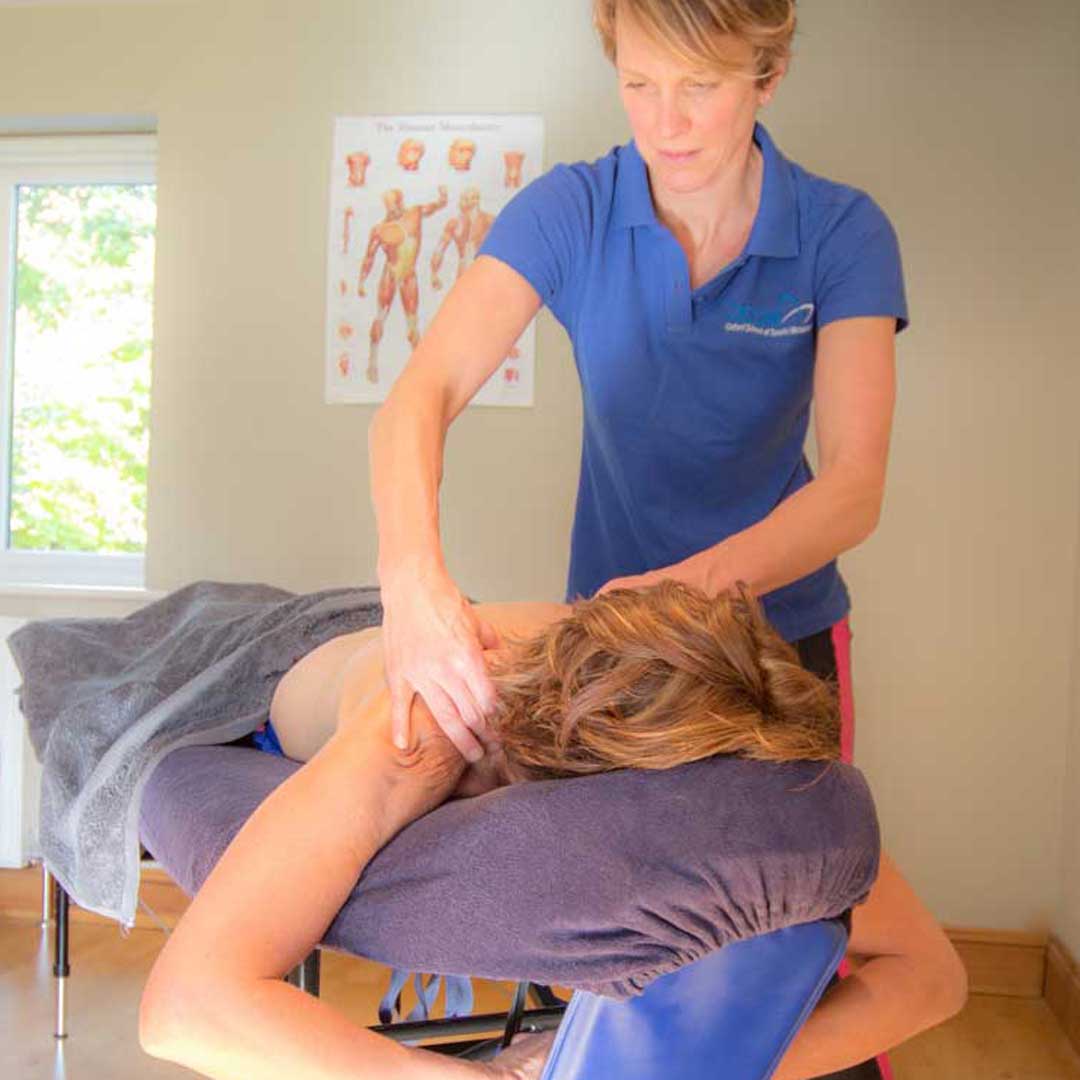
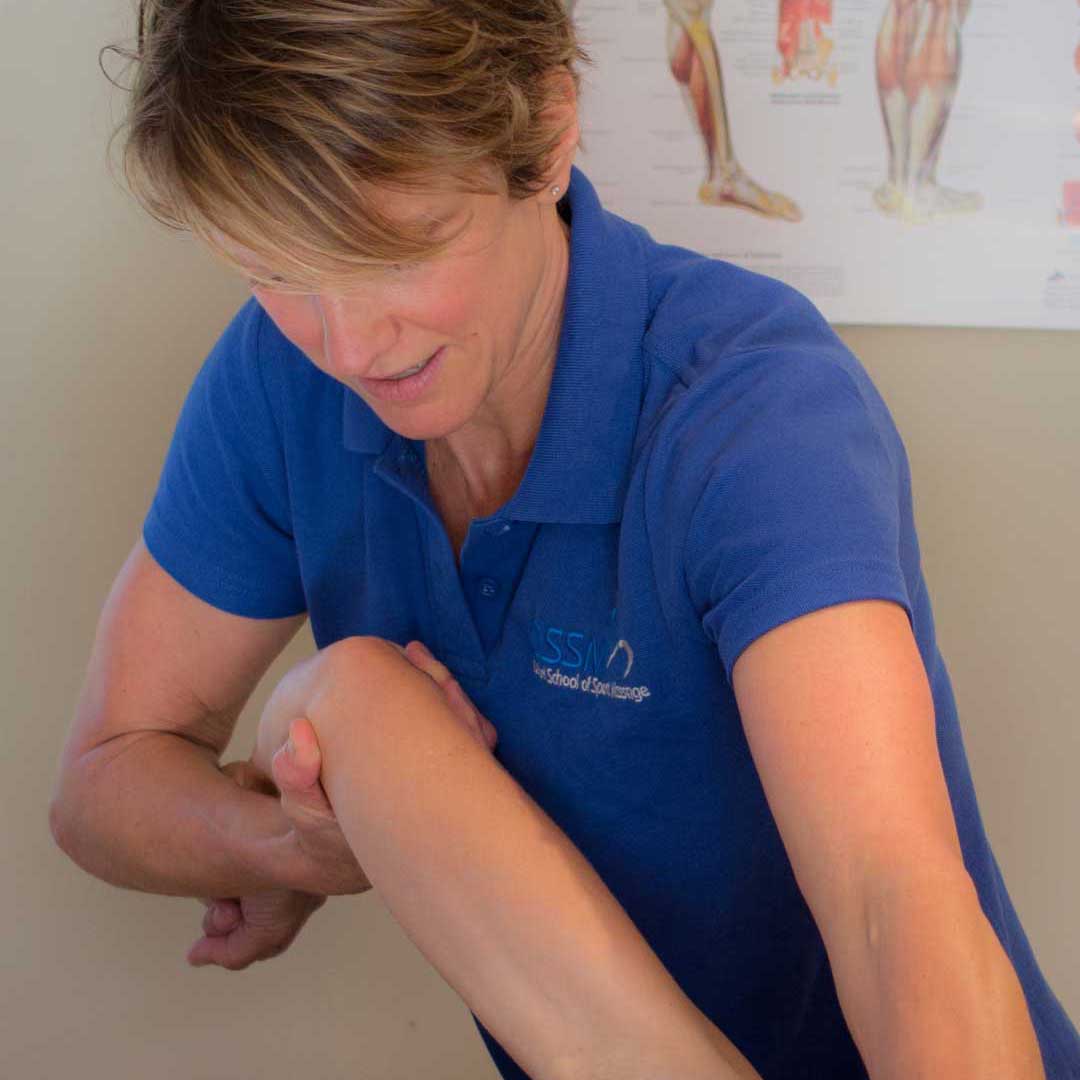
Sports Massage and Injury Prevention
Physical exercise undoubtedly offers huge benefits both mentally and physically, but it also places demands on the body. Sports massage supports the benefits of exercise, offering numerous physical, physiological and mental benefits. It is proven to enhance sporting performance by decreasing recovery times and reducing the chances of injury.
Sports massage helps to optimise muscle tone and length, improve circulation and assist in the removal of metabolic waste. It positively effects the nervous system through relaxation of the soft tissue and stimulation of the parasympathetic nervous system, leaving the patient feeling relaxed and in a positive state of mind.
Sports massage addresses muscular imbalance and dysfunction before they become a problem. Short, tight muscles can be lengthened and long, weak muscles strengthened using various massage and stretching techniques.
Sports Massage enables early detection and treatment of repetitive microtrauma caused during training, avoiding accumulation which can lead to more serious injuries in which sporting participation might have to be ceased for a period.
Essentially, through a variety of massage and stretching techniques, regular sports massage ensures you are in the best possible shape to enjoy your chosen sport and minimises the risk of injury.
Remedial Massage and Rehabilitation
Remedial massage is used to address problems such as:
- Chronic muscle and joint pain
- Muscle strains
- Ligament sprains
- Tendonitis
- Overuse syndrome (repetitive strain injury)
- Build-up of scar tissue
- Pain caused by chronic health conditions like fibromyalgia or MS.
After a thorough assessment of the injury, I will devise a personalised treatment using a number of different massage and stretching techniques to recondition the soft tissue, improve mobility across the related joint and restore muscular balance. I will also recommend an achievable rehabilitation programme, which may involve stretching and strengthening. We can also discuss making changes to your exercise regime and daily routines.
Pregnancy / Prenatal Massage
Prenatal massage uses lighter techniques than the deeper techniques of Sport and Remedial Massage. In recent years, studies have shown that there are many benefits of massage to the expectant mother and the developing baby.
Massage stimulates blood circulation, improving the supply of oxygen and nutrients around the mother’s body and to the developing baby. It also assists in the disposal of metabolic waste through the body’s lymphatic system.
The volume of blood and body fluids increases by up to 50% during pregnancy, potentially causing edema, or swelling of the joints, especially in the ankles and wrists. Excessive fluid in the wrist can also lead to Carpal Tunnel Syndrome. Massage helps to prevent excess fluid from accumulating in the joints.
Feelings of stress and anxiety are common during pregnancy. It’s been shown that regular prenatal massage can reduce the hormones associated with stress, norepinephrine and cortisol, whilst increasing the hormones associated with feelings of wellbeing, dopamine and serotonin. This creates mood stability for the mother, improves her sleep patterns and reduces fatigue, all of which benefit her, the developing baby and all those around her.
Many women experience lower back pain during pregnancy, especially in the third trimester when extra weight over the abdominal area causes the body’s centre of gravity to shift forward, and the lumbar spine’s natural lordosis increases. Massage in this area can ease the resulting tension in the lower and mid back caused as the muscles work hard to support the shift in weight.
Of course, most expectant mothers continue to work well into their pregnancy, and so will continue to experience the same aches and pains as before the pregnancy. Aches and pains caused by poor posture, or prolonged periods sitting at a desk, won’t disappear and may even worsen. Pregnancy massage can help address these problem areas.
Please note I do not offer prenatal massage in the first trimester of the pregnancy.
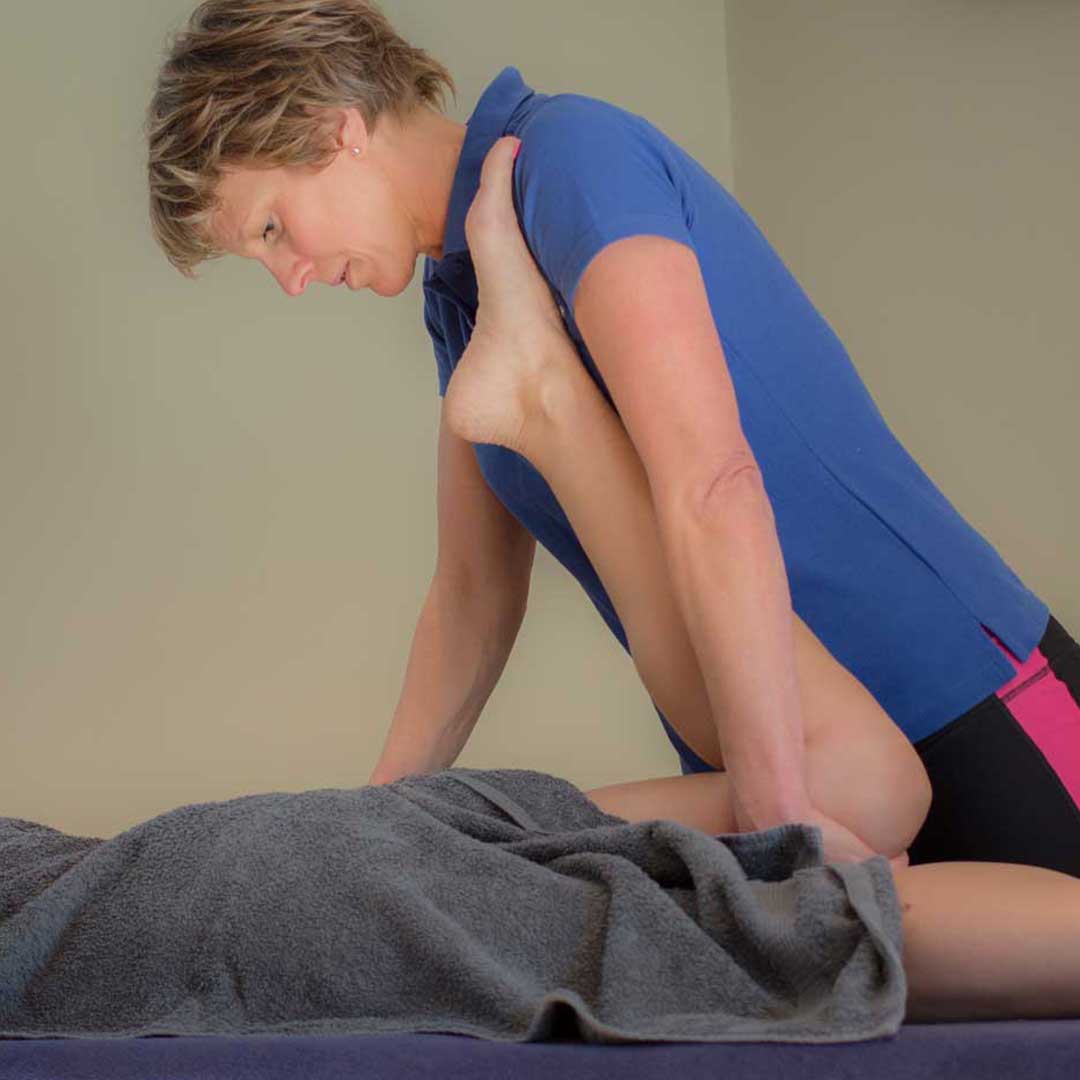
Techniques
During all treatments I use a variety of traditional and advanced massage and stretching techniques:
Effleurage: The primary effect is to stimulate the blood circulation and identify any areas of tension. Effleurage strokes are applied superficially or deeply either longitudinally along the length of a muscle or transversally at right angles to the direction of muscle fibres. Superficial, longitudinal effleurage strokes, often used at the start of the treatment, spread the massage oil/cream/wax, whilst warming the area being treated, causing the muscles to relax. Deeper effleurage can be used on areas of tension to help loosen any muscle fibre adhesions and assist in breaking down scar tissue. Transverse effleurage strokes are an effective way of diagnosing bands of tension and can also separate muscle compartments which may have bound together. The muscle fibres are then realigned using deep longitudinal strokes.
Petrissage: Petrissage is a kind of “kneading” technique. Like effleurage, the primary effects are to stimulate the circulation and warm and loosen the treatment area.
Friction: A deep massage technique using reinforced fingers or thumbs. Never used in the acute stage of injury, friction can be used cautiously in the early stages of healing and into the chronic phase. Friction can be used to break down adhesions and areas of scar tissue, improving blood circulation in the area, which then stimulates the natural healing process. Friction also helps realign disordered fibres and can be used to breakdown fibrous adhesions around joints.
Neuromuscular Technique: Used to treat reflex or trigger points, neuromuscular technique (NMT) is a deep pressure applied using reinforced fingers, thumbs, knuckles or elbows to painful reflex or trigger points. These points can develop when tension increases around a trauma in order to protect it, but does not decrease once the injury has recovered. Neuromuscular technique helps to “re-set” the neural pathway, changing the reflex pattern and allowing the point of tension to relax and dissipate.
Soft Tissue Release: Extremely effective in treating muscular adhesions, scar tissue, overuse injuries and hypertonic (tense) muscles. It is also effective as a way of optimising training by applying localised and general stretches in between training sessions. This technique involves shortening the muscle to be treated, which must remain relaxed throughout, and then using the therapist’s fingers, thumb or elbow, a “lock” is applied onto the muscle tissue, which is then lengthened, causing an intense localised stretch.
Muscle Energy Technique (MET): Applied in acute, sub-acute or chronic injuries, muscle energy technique can be used to restore normal tone in a hypertonic muscle, to strengthen a weakened muscle and to increase the range of movement across a joint. It is also used during general conditioning massage in conjunction with training to maintain optimal muscle length.
The therapist causes an isometric contraction by applying an equal resistive force against a muscle contraction by the client and prevents the joint from moving. Neural signals follow a complex pathway from the contracting muscle to the central nervous system and then back to the muscle, causing the muscle to relax. The period of relaxation lasts around 20-25 seconds, during which the therapist can increase the stretch in the muscle. This process can be repeated two or three times, each time increasing the stretch..
TREATMENTS
Sports Massage and Injury Prevention
Physical exercise undoubtedly offers huge benefits both mentally and physically, but it also places demands on the body. Sports massage supports the benefits of exercise, offering numerous physical, physiological and mental benefits. It is proven to enhance sporting performance by decreasing recovery times and reducing the chances of injury.
Sports massage helps to optimise muscle tone and length, improve circulation and assist in the removal of metabolic waste. It positively effects the nervous system through relaxation of the soft tissue and stimulation of the parasympathetic nervous system, leaving the patient feeling relaxed and in a positive state of mind.
Sports massage addresses muscular imbalance and dysfunction before they become a problem. Short, tight muscles can be lengthened and long, weak muscles strengthened using various massage and stretching techniques.
Sports Massage enables early detection and treatment of repetitive microtrauma caused during training, avoiding accumulation which can lead to more serious injuries in which sporting participation might have to be ceased for a period.
Essentially, through a variety of massage and stretching techniques, regular sports massage ensures you are in the best possible shape to enjoy your chosen sport and minimises the risk of injury.
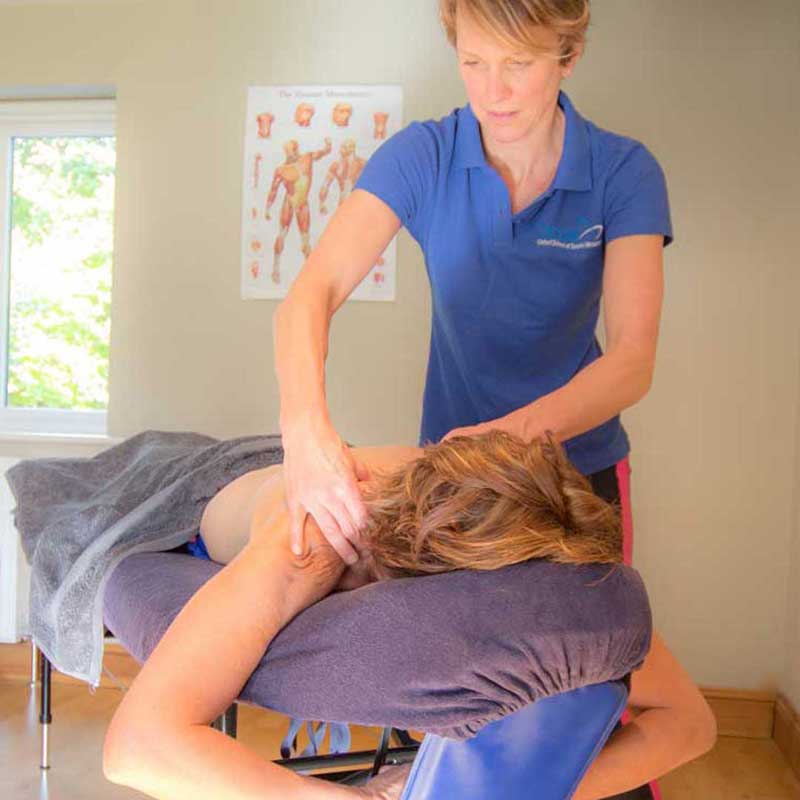
Remedial Massage and Rehabilitation
Remedial massage is used to address problems such as:
- Chronic muscle and joint pain
- Muscle strains
- Ligament sprains
- Tendonitis
- Overuse syndrome (repetitive strain injury)
- Build-up of scar tissue
- Pain caused by chronic health conditions like fibromyalgia or MS.
After a thorough assessment of the injury, I will devise a personalised treatment using a number of different massage and stretching techniques to recondition the soft tissue, improve mobility across the related joint and restore muscular balance. I will also recommend an achievable rehabilitation programme, which may involve stretching and strengthening. We can also discuss making changes to your exercise regime and daily routines.
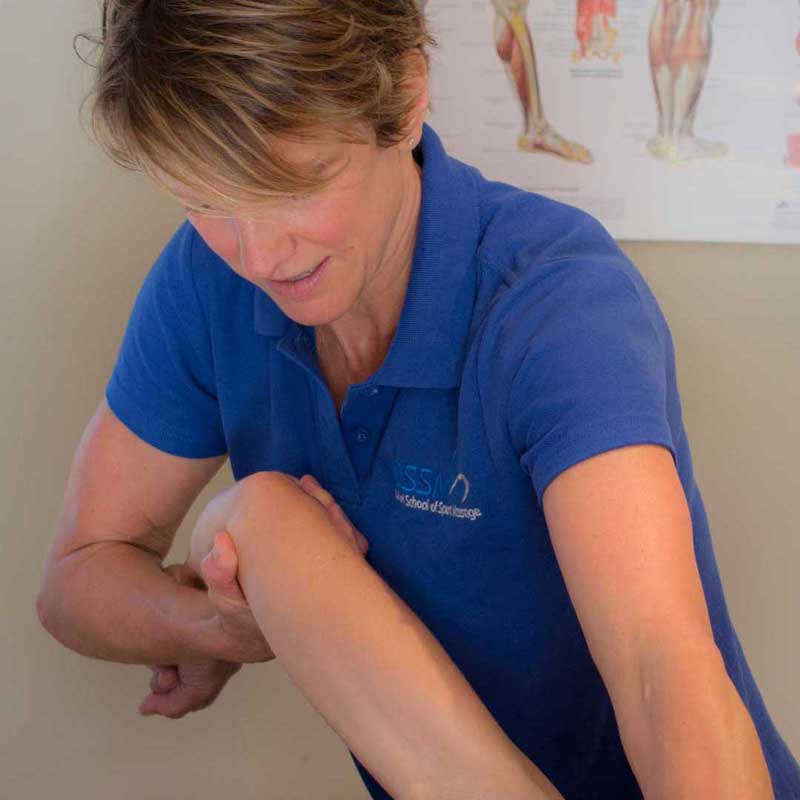
Pregnancy / Prenatal Massage
Prenatal massage uses lighter techniques than the deeper techniques of Sport and Remedial Massage. In recent years, studies have shown that there are many benefits of massage to the expectant mother and the developing baby.
Massage stimulates blood circulation, improving the supply of oxygen and nutrients around the mother’s body and to the developing baby. It also assists in the disposal of metabolic waste through the body’s lymphatic system.
The volume of blood and body fluids increases by up to 50% during pregnancy, potentially causing edema, or swelling of the joints, especially in the ankles and wrists. Excessive fluid in the wrist can also lead to Carpal Tunnel Syndrome. Massage helps to prevent excess fluid from accumulating in the joints.
Feelings of stress and anxiety are common during pregnancy. It’s been shown that regular prenatal massage can reduce the hormones associated with stress, norepinephrine and cortisol, whilst increasing the hormones associated with feelings of wellbeing, dopamine and serotonin. This creates mood stability for the mother, improves her sleep patterns and reduces fatigue, all of which benefit her, the developing baby and all those around her.
Many women experience lower back pain during pregnancy, especially in the third trimester when extra weight over the abdominal area causes the body’s centre of gravity to shift forward, and the lumbar spine’s natural lordosis increases. Massage in this area can ease the resulting tension in the lower and mid back caused as the muscles work hard to support the shift in weight.
Of course, most expectant mothers continue to work well into their pregnancy, and so will continue to experience the same aches and pains as before the pregnancy. Aches and pains caused by poor posture, or prolonged periods sitting at a desk, won’t disappear and may even worsen. Pregnancy massage can help address these problem areas.
Please note I do not offer prenatal massage in the first trimester of the pregnancy.
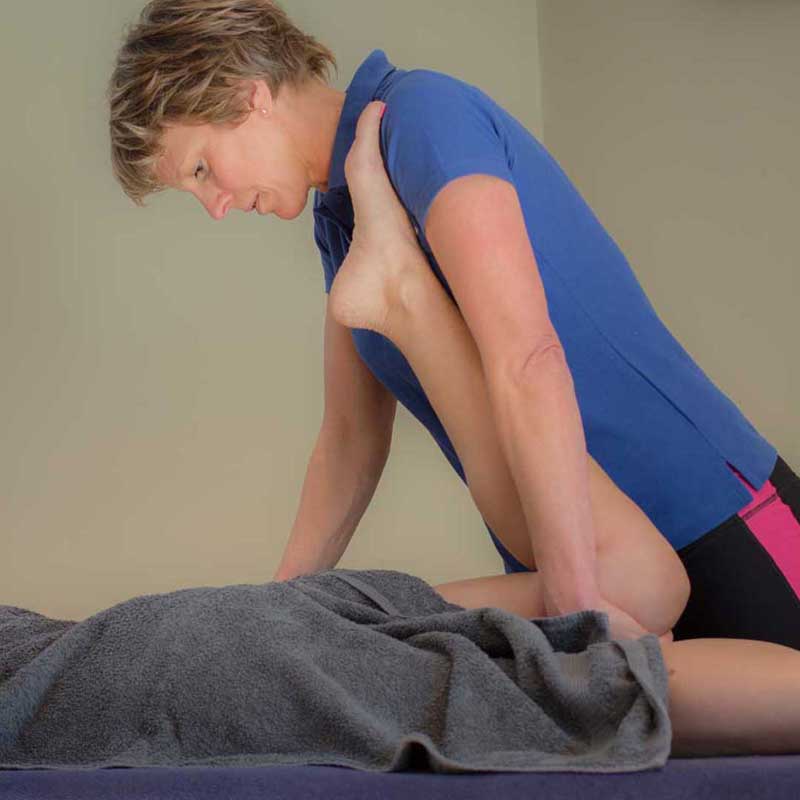
Techniques
During all treatments I use a variety of traditional and advanced massage and stretching techniques:
Effleurage: The primary effect is to stimulate the blood circulation and identify any areas of tension. Effleurage strokes are applied superficially or deeply either longitudinally along the length of a muscle or transversally at right angles to the direction of muscle fibres. Superficial, longitudinal effleurage strokes, often used at the start of the treatment, spread the massage oil/cream/wax, whilst warming the area being treated, causing the muscles to relax. Deeper effleurage can be used on areas of tension to help loosen any muscle fibre adhesions and assist in breaking down scar tissue. Transverse effleurage strokes are an effective way of diagnosing bands of tension and can also separate muscle compartments which may have bound together. The muscle fibres are then realigned using deep longitudinal strokes.
Petrissage: Petrissage is a kind of “kneading” technique. Like effleurage, the primary effects are to stimulate the circulation and warm and loosen the treatment area.
Friction: A deep massage technique using reinforced fingers or thumbs. Never used in the acute stage of injury, friction can be used cautiously in the early stages of healing and into the chronic phase. Friction can be used to break down adhesions and areas of scar tissue, improving blood circulation in the area, which then stimulates the natural healing process. Friction also helps realign disordered fibres and can be used to breakdown fibrous adhesions around joints.
Neuromuscular Technique: Used to treat reflex or trigger points, neuromuscular technique (NMT) is a deep pressure applied using reinforced fingers, thumbs, knuckles or elbows to painful reflex or trigger points. These points can develop when tension increases around a trauma in order to protect it, but does not decrease once the injury has recovered. Neuromuscular technique helps to “re-set” the neural pathway, changing the reflex pattern and allowing the point of tension to relax and dissipate.
Soft Tissue Release: Extremely effective in treating muscular adhesions, scar tissue, overuse injuries and hypertonic (tense) muscles. It is also effective as a way of optimising training by applying localised and general stretches in between training sessions. This technique involves shortening the muscle to be treated, which must remain relaxed throughout, and then using the therapist’s fingers, thumb or elbow, a “lock” is applied onto the muscle tissue, which is then lengthened, causing an intense localised stretch.
Muscle Energy Technique (MET): Applied in acute, sub-acute or chronic injuries, muscle energy technique can be used to restore normal tone in a hypertonic muscle, to strengthen a weakened muscle and to increase the range of movement across a joint. It is also used during general conditioning massage in conjunction with training to maintain optimal muscle length.
The therapist causes an isometric contraction by applying an equal resistive force against a muscle contraction by the client and prevents the joint from moving. Neural signals follow a complex pathway from the contracting muscle to the central nervous system and then back to the muscle, causing the muscle to relax. The period of relaxation lasts around 20-25 seconds, during which the therapist can increase the stretch in the muscle. This process can be repeated two or three times, each time increasing the stretch..
